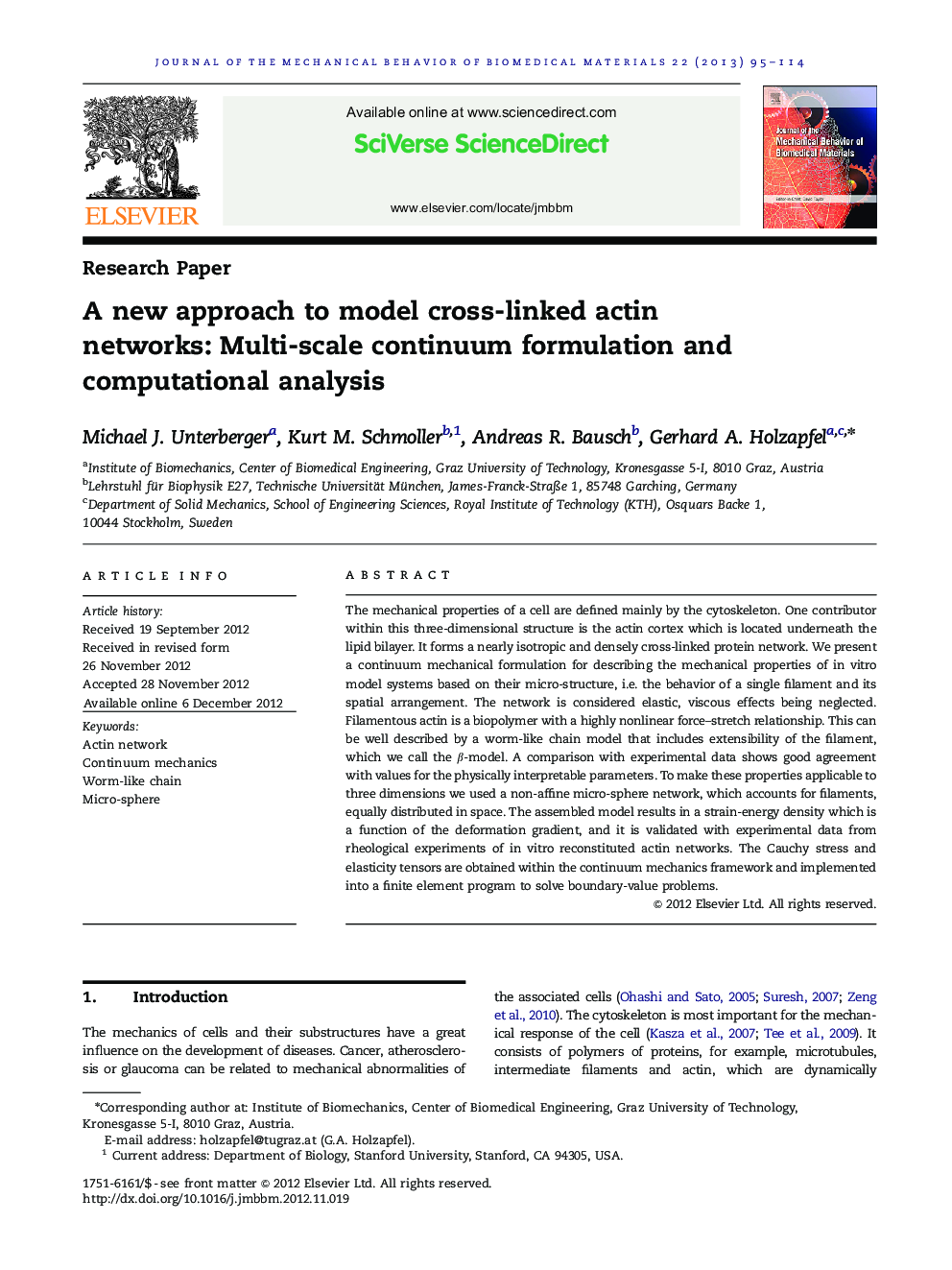| Article ID | Journal | Published Year | Pages | File Type |
|---|---|---|---|---|
| 810889 | Journal of the Mechanical Behavior of Biomedical Materials | 2013 | 20 Pages |
The mechanical properties of a cell are defined mainly by the cytoskeleton. One contributor within this three-dimensional structure is the actin cortex which is located underneath the lipid bilayer. It forms a nearly isotropic and densely cross-linked protein network. We present a continuum mechanical formulation for describing the mechanical properties of in vitro model systems based on their micro-structure, i.e. the behavior of a single filament and its spatial arrangement. The network is considered elastic, viscous effects being neglected. Filamentous actin is a biopolymer with a highly nonlinear force–stretch relationship. This can be well described by a worm-like chain model that includes extensibility of the filament, which we call the β-modelβ-model. A comparison with experimental data shows good agreement with values for the physically interpretable parameters. To make these properties applicable to three dimensions we used a non-affine micro-sphere network, which accounts for filaments, equally distributed in space. The assembled model results in a strain-energy density which is a function of the deformation gradient, and it is validated with experimental data from rheological experiments of in vitro reconstituted actin networks. The Cauchy stress and elasticity tensors are obtained within the continuum mechanics framework and implemented into a finite element program to solve boundary-value problems.
Graphical abstractDeformation of a single filament in a network according to the deformation gradient F¯. Simultaneous fits of the shear and normal stress responses to data from rheological experiments show a good match.Figure optionsDownload full-size imageDownload high-quality image (187 K)Download as PowerPoint slideHighlights► We propose a micro-structurally motivated continuum model for actin networks. ► Most material parameters are observable measures. ► The model captures data from rheological experiments very well. ► The model may be used to analyze complex experiments in cell mechanics.
